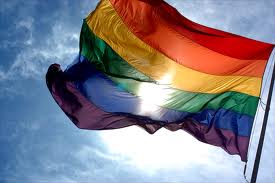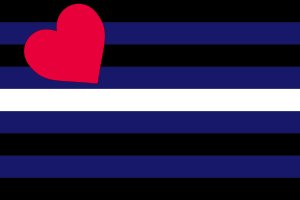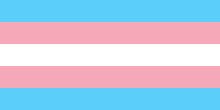This weekend is one of the busiest of the gay pride season, with pride parades and celebrations taking place in London, Paris, New York, San Francisco, Dublin and Houston to name but a few. It is appropriate that we should mark this weekend since it was on Saturday 28th June 1969 that the now famous Stonewall Riots began in Christopher Street, New York. Many believe this to have been a watershed moment in LGBT history and it certainly led to a new impetus to organise pride marches and celebrations. The first gay pride march in the U.S. took place in New York on the first anniversary of the Stonewall riots and was called Christopher Street Liberation Day.
Gay Pride grew as a global movement taking a stand against discrimination and homophobia. Pride also increased the visibility of the social group and celebrated its diversity. No other symbol unites LGBT people so readily as the pride flag, or rainbow flag, sometimes known as the freedom flag. The rainbow flag started life in late 1970’s California but it is now a universal symbol of pride with it’s colours reflecting the diversity of the LGBT community.
The original eight-striped flag was designed by the San Francisco artist Gilbert Baker in 1978 and was first seen in the San Francisco Gay Freedom Day parade on 25th June of that year. Baker assigned a meaning to each of the eight stripes as follows:
- Hot pink = sexuality.
- Red = life.
- Orange = healing.
- Yellow = sunlight.
- Green = nature.
- Turquoise = magic/art.
- Indigo = serenity.
- Violet = spirit.
Prior to this time there had been a striped flag called the Flag of The Human Race which had grown out of the 1960’s hippie movement and used in many student demo’s. Gilbert Baker it thought to have been influenced by this but he may also have been inspired by the iconic Judy Garland’s singing “Over the Rainbow”. The Stonewall riots happened just a few days after Garland’s death.
Following the assassination of Harvey Milk in the November of 1978, demand for the flag greatly increased. In order to meet the huge demand, flags were quickly made from stock rainbow fabrics which did not include the hot pink stripe. In 1979 the flags were hung vertically from lamp-posts in San Francisco’s Market Street but the post itself obscured the center stripe. The solution to this was to have a flag with an even number of stripes and so it was decided to blend the turquoise and indigo stripes into one royal blue stripe. This modification created the current six-stripe version of the flag which is now globally accepted.
On the 25th anniversary of the Stonewall riots in 1994, a mile long rainbow flag was created for the New York Parade. After the event, the flag was cut into several sections which were dispatched to various cities around the globe where they still appear in annual parades. When the flag reached it’s own 25th birthday in 2003 Gilbert Baker restored the original eight stripe design and hoped it would be continued but there was little take up and the six-stripe flag prevailed.
There have been many variations of the flag developed for specific groups over the years. During the early years of the AIDS epidemic, a “Victory Over AIDS” flag was designed with a seventh, black stripe added to the bottom of the rainbow. This again never achieved global acceptance although some newer versions of the striped flag have e.g.
The Leather (BDSM) Flag.
The Bear Flag.
The Transgender Pride Flag.
The Bisexual Pride Flag
Author T.J.Masters will be taking part in the London Pride parade on Saturday 27th July.
His work can be seen at www.tjmasters.com






Another good one TJ. I actually think I have an original seven stripped flag around here somewhere, if it hasn’t dry-rotted.
You are correct with the Judy Garland reference. During that era, “Do you know Judy”, was commonly used, especially within the military, which was basically asking if you were gay.
Great job!
Thanks for the support as always Max.
Our version of the ” Do you know Judy?” phrase was “Are you a friend of Dorothy?”
I remember many years ago during the BBC live broadcast of the Last Night of the Proms from the Royal Albert Hall in London, the Camera scanning the crowd alighted on a banner saying ‘Friends of Dorothy’. The commentator responded with, “I’m sure Dorothy has many friends here tonight!”
I really enjoyed your post. Very interesting.
Interesting post I like the way artist Gilbert Baker assigned a meaning to each of the eight stripes on the rainbow flag.
Cheers T for sharing a piece of LGBT history.
I went on a ship, cruise, and they had a society ‘Friends of Dorothy’ for gay men to meet.